 |  |
By David Kier
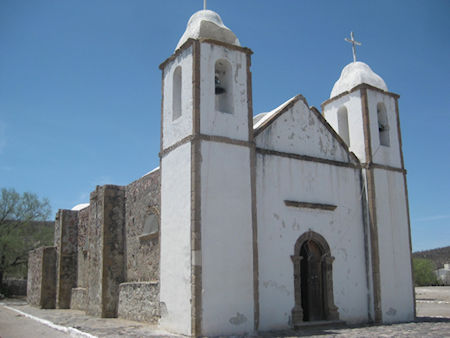
Mission San Luis Gonzaga Chiriyaqui, the 14th Baja California mission, was founded on July 14, 1737. This location was established years earlier as a visita (satellite chapel) of Mission Nuestra Señora de los Dolores, in 1721. San Luis Gonzaga is one of the surviving stone mission churches and was the last mission founded in Baja California Sur. It is located about thirty miles southeast of Ciudad Constitución at an oasis on the vast Magdalena Plain.
Funding for the new mission was provided by Don Luis de Velasco, with a pledge of 10,000 pesos. The Jesuit Padre Lamberto Hostell was chosen as its founding missionary. Chiriyaqui was Native Guaycura name for this area of the Magdalena Plain. The mission was usually called simply ‘San Luis’ in letters between Jesuits.
Just a month following Padre Hostell’s arrival, he was called away to deal with problems at Mission San José del Cabo. He remained away until November 1740. Due to this early absence, some consider the mission beginning in 1740. However, during this period, Padre Clemente Guillén, of Mission Los Dolores, made calls on San Luis Gonzaga, as he had when it was one of his mission’s visitas.
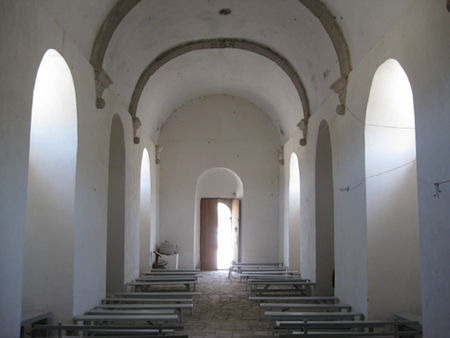
In 1744, the Jesuit Padre-Visitador-General Antonio Balthasar toured all the missions to prepare his report. He writes the population of San Luis Gonzaga was 488. In 1746, Padre Hostell was called upon to replace the ill Padre Guillén, at Mission Los Dolores. Five years earlier, Dolores had moved to its visita of La Pasión, a move that had reduced the distance between Dolores and San Luis by half. Padre Juan Javier Bischoff replaced Padre Hostell at Mission San Luis Gonzaga for the next four years.
On May 28, 1751, Padre Jacobo Baegert arrived to take over duties at Mission San Luis. Baegert wrote all about his time in California and it was published in 1772. That book was translated into English in 1952, with the title, Observations in Lower California. The book gives a detailed account of Baegert’s experiences and findings, along with his opinions about Native Californians.
The book’s Introduction sets the tone: “Everything concerning California* is of such little importance that it is hardly worth the trouble to take a pen and write about it. Of poor shrubs, useless thorn bushes and bare rocks, of piles of stone and sand without water or wood, what shall or what can I report? However, because California forms no small part of the New World about which the Old World desires information: and because all the modern geographers and cosmologists tell about it, and none of them tells the truth; furthermore, because a short time ago the same California caused (in Mexico as well as in Madrid) a great deal of clamor because of its imaginary riches, some of which may have been heard in Germany; and finally, because in Europe one hears and reads with equal interest of the poverty and misery as of the abundance and wealth, as well as of the accomplishments and good government of peoples beyond the ocean; I decided to accede to the demands of my good friends and other respected persons and, through a short description of the land and other things connected with it, to satisfy the craving curiosity of the public, as well as to refute the falsehoods and defamations of some of the writers.”
*California refers to the peninsula called Baja California today.
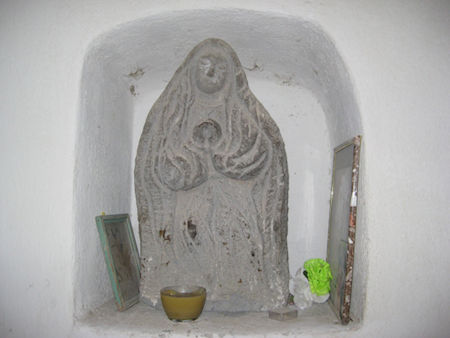
Even though Baegert had a rather dark opinion of the Californians, his report on the peninsula’s geography and the people provides a detailed look at the peninsula in the 1700’s. Observations in Lower California is a book worthy of reading to learn more about that historic period.
Padre Baegert was the Jesuit who constructed the stone church we see today. Masons and craftsmen arrived to begin construction in March of 1753 and finished the church in December of 1758. Other mission projects were conducted, such as an aqueduct to bring water from the spring to the fields. Baegert grew cabbage, melons, turnips, wheat, corn, and sugarcane. Sadly, plagues of locusts were frequent and ruined crops. Goats, sheep, and also cattle were among the mission’s livestock.
Padre Baegert was one of the sixteen Jesuits who were removed from California by Royal Order of King Carlos III. The Jesuit Order, with its missionaries all over the Western Hemisphere, had fallen out of favor of the King. The California Jesuits were falsely accused of being secretive about hording treasures they collected and not sharing with the King, his Royal dues. They left California on February 3, 1768, to be returned to Spain as prisoners. The non-Spanish Jesuits eventually went back to their home countries. Baegert was from Germany and there he would author his book about (Baja) California. No treasures were ever found.
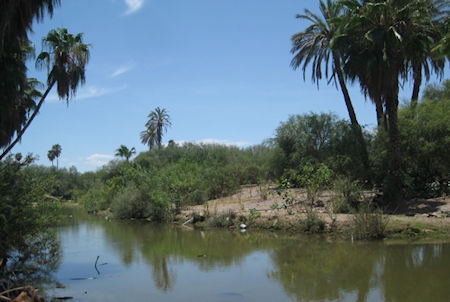
Mission San Luis Gonzaga, with its handsome church and oasis makes an interesting visit. The mission church graveyard is behind it, so do walk around. The other buildings that are empty and roofless date from a century or more ago when this was a prosperous ranching center of the de la Toba family. When Baja California accepted the loss of Spain in the war for independence, Fernando de la Toba was made the interim governor of the peninsula. The earlier name for Ciudad Insurgentes was Colonia de la Toba, so a very influential family, indeed.
The drive to San Luis Gonzaga, BCS, begins from Km. 195, about eight miles south of Ciudad Constitución. The 22-mile graded road is an easy, albeit dusty drive for any SUV or truck. Slow down for the concrete-bottom-dips that appear suddenly. Twelve miles from the highway is the only fork; a right turn is the correct road. Straight ahead leads to a dam and reservoir (3 miles). A small village surrounds the mission. The road continues southeast and may be used to reach San Evaristo, on the gulf coast and on to La Paz.
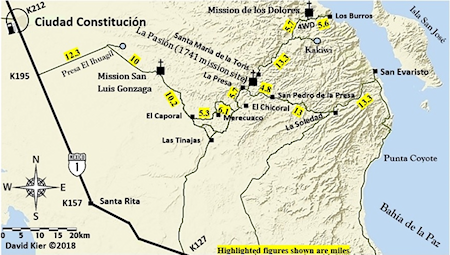

Convenient, great website, prices are reasonable.

Great, easy to use service. I haven't had to file a claim (and hope I never have to) but the online...

Quick and easy! Never a problem with Baja Bound Ins.